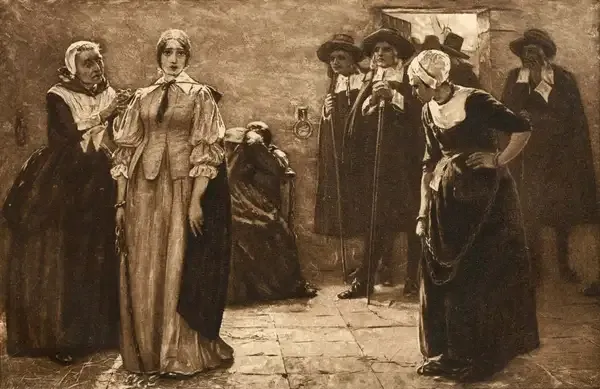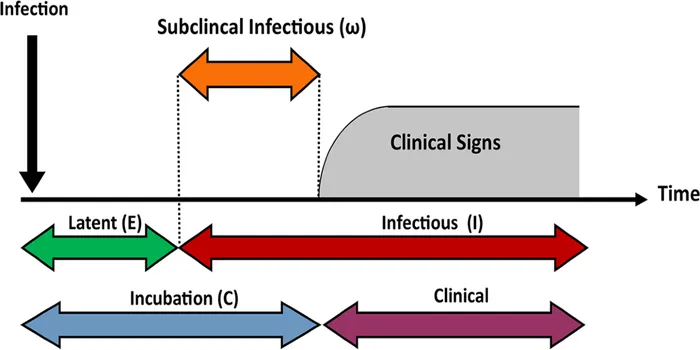How Rye Bread May Have Caused the Salem Witch Trials
The Salem Witch Trials may have been influenced by ergot poisoning from contaminated rye bread. Ergot, a fungus that grows on rye, contains chemicals similar to LSD, potentially causing hallucinations, paranoia, and convulsions. These symptoms could have been misinterpreted as witchcraft. The damp, marshy conditions in Salem were ideal for ergot growth, possibly affecting the residents' behavior and perceptions. This theory suggests that the hysteria and accusations during the trials might have been fueled by this natural, yet misunderstood, phenomenon.

The Salem Witch Trials of 1692 remain one of the most infamous episodes in American history, characterized by a series of hearings and prosecutions of individuals accused of witchcraft. While many factors contributed to this tragic event, recent studies suggest that ''rye bread'', specifically its relation to ''ergot'' fungus, may have played a significant role in the hysteria that swept through Salem. This article explores the connection between rye bread and the Salem Witch Trials, the science behind it, and the implications of such theories.
The Role of Rye Bread in the 17th Century
Rye was a staple grain in colonial New England, particularly in the harsh winters when other crops failed. It was often used to make bread, which became a significant part of the diet for the settlers. Due to its resilience and ability to grow in poor soil, ''rye bread'' was consumed widely, especially among the poorer populations. However, rye is also susceptible to a particular type of fungus known as ''Claviceps purpurea'', which produces alkaloids that can lead to severe health issues.
Understanding Ergotism
When rye grain becomes infected with ergot fungus, it can produce a condition known as ''ergotism''. This condition can manifest in two forms: ''convulsive ergotism'', which causes symptoms like seizures, hallucinations, and muscle spasms; and ''gangrenous ergotism'', which leads to severe physical ailments and even death. The ''alkaloids'' produced by the fungus can cause altered mental states, which might explain some of the bizarre behaviors exhibited by the accused during the Salem Witch Trials.
The Symptoms of Ergotism
Many historians and scientists have speculated that the symptoms of ''ergotism'' might mimic those attributed to witchcraft during the Salem Trials. Here’s a comparative table highlighting the symptoms of ergotism and those that were reported during the trials:
| Symptoms of Ergotism | Reported Symptoms during Salem Witch Trials |
|---|---|
| Seizures | Convulsions |
| Hallucinations | Visions and claims of witchcraft |
| Muscle spasms | Uncontrollable movements |
| Paranoia | Fear and accusations of witchcraft |
Historical Context and Theories
During the late 17th century, the Puritan community in Salem was under immense pressure from various social and environmental stressors, such as economic hardship, political instability, and frequent conflicts with Native Americans. The combination of these stressors may have made the community more susceptible to ''mass hysteria'' and irrational fears. The sudden onset of strange behaviors among certain individuals in Salem could have been exacerbated by the consumption of ''rye bread'' contaminated with ergot fungus.
Some researchers have pointed out that the geographical and climatic conditions of the Salem area during that time could have fostered the growth of ergot in rye crops. In fact, the winter of 1691-1692 was noted to be particularly harsh, potentially leading to poor harvesting conditions and increased fungal growth.
Scientific Studies and Evidence
In 1976, a study conducted by Dr. Linnda Caporael proposed that ''ergotism'' could explain the symptoms observed during the trials. While this theory has gained traction, skeptics argue that it oversimplifies the complex social dynamics at play. Nevertheless, the possibility that ''rye bread'' could have played a role in the Salem Witch Trials has sparked a renewed interest in the intersection of ''food'', ''health'', and ''historical events''.
Modern Implications
The connection between ''rye bread'' and the Salem Witch Trials serves as a cautionary tale about the importance of food safety and the potential repercussions of environmental factors on human health. It also highlights how misinformation and lack of understanding can lead to mass hysteria, a theme that remains relevant in today's society. As we continue to navigate issues related to food safety, mental health, and social dynamics, the lessons from Salem are more pertinent than ever.
Conclusion
While the idea that ''rye bread'' contaminated with ergot fungus could have triggered the Salem Witch Trials remains a theory, it opens up an intriguing dialogue about the influences of food and health on societal behaviors. Understanding the past can help us make better decisions for the future, ensuring that history does not repeat itself in the face of ignorance and fear.












